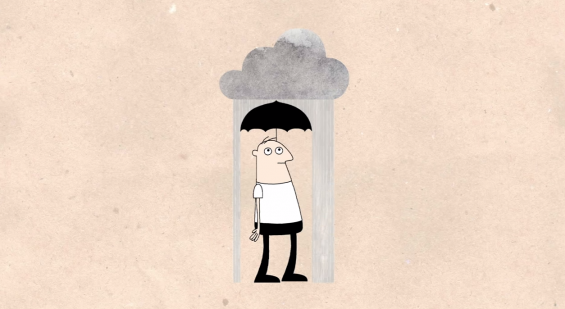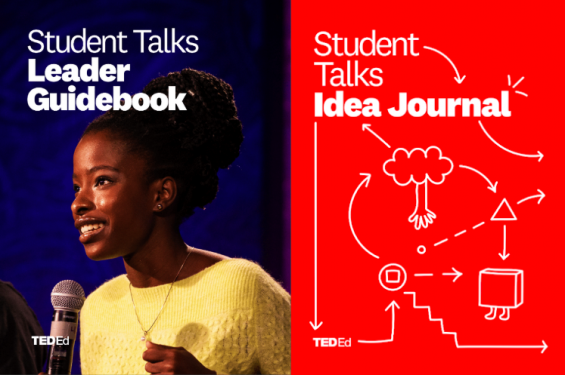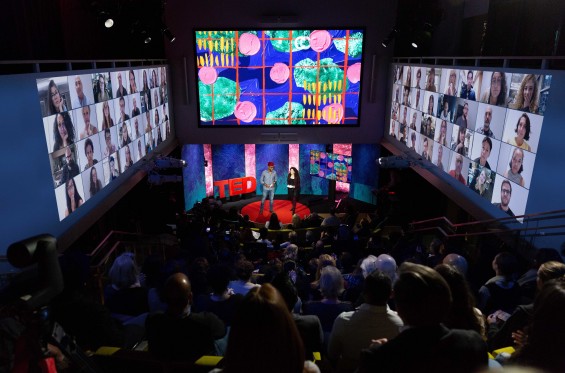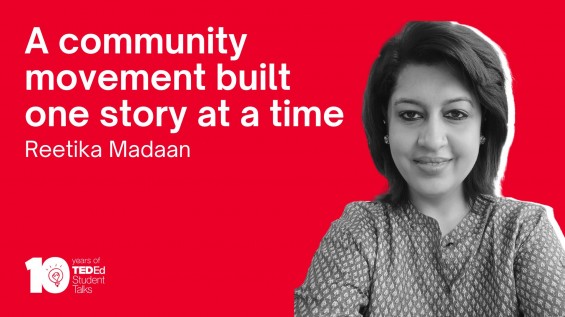
3 storytelling tips for TED-Ed Student Talks
Great TED Talks — and TED-Ed Student Talks — can be as compelling as any fictional tale. As a student when I gave my TED Talk, I thought a lot about how to use narrative writing strategies for powerful presentations. Below are 3 storytelling tips for your next talk, plus some inspiration from other TED speakers:
1. Make conflicts and obstacles central to the narrative.
Without conflicts and obstacles, stories lack uncertainty and suspense. Ask yourself: who or what do I want to defeat? How do I get the audience on my side? Your conflicts and obstacles don’t need to have the fate of the world in the balance. They can be much more personal. In the TED Talk “My stroke of insight,” Jill Bolte Taylor introduced her conflict this way: “On the morning of December 10, 1996, I woke up to discover that I had a brain disorder of my own. A blood vessel exploded in the left half of my brain. And in the course of four hours, I watched my brain completely deteriorate in its ability to process all information. On the morning of the hemorrhage, I could not walk, talk, read, write or recall any of my life. I essentially became an infant in a woman’s body.” Starting with this obstacle hooks viewers immediately and makes us want to know the outcome of her story. She could have chosen not to make this obstacle central to her story, and bombarded the audience with de-personalized information about neuroscience. Instead, she created tension and suspense, immediately grabbing viewers’ attention and making us root for her. [To learn more about the narrative power of a great introduction, watch this TED-Ed Animation.]
2. Show us the origin story of why you care about this idea.
Imagine a movie that starts with drivers in neon-colored sports cars, recklessly racing down a street crowded with vendors and shoppers in a night bazaar. The race culminates in a giant explosion, then a firefight, then hand-to-hand combat…and still zero dialogue, still absolutely no explanation of why it all starts. This movie doesn’t exist, because it wouldn’t have an audience. All books and movies eventually give you some kind of origin story that answers the question, “Why does [insert character here] care?” Justice. Power. Love. The list goes on.
Audiences will be skeptical that you just woke up one day and decided to care about something out of nowhere; you need to tell them the origin story of your concern. Their emotional investment starts with your emotional investment. For instance, Nobel Prize winner and TED speaker Kailash Satyarthi said, “All my best ideas were born of anger.” He told the story of seeing children sold into slavery, friends leaving school because of poverty, and low-caste members of his community ostracized. We’re often told to quell emotions like sadness or outrage, for fear that they appear unprofessional or extreme, but these emotions can help provoke compassion, empathy and action. Satyarthi uses his origin story to show the depth of his passion — and anger — about an important issue.
3. Build three-dimensional characters who are unafraid to be vulnerable.
TEDxTeen speaker Tavi Gevinson said in her talk, “The flaws are the key. What makes a strong female character is a character who has weaknesses, who has flaws, who is maybe not immediately likable, but eventually relatable.” Tavi’s definition of a strong female character can be generalized to all characters, regardless of gender. When was the last time you read a book or watched a movie about a main character who was absolutely perfect? From virtuous figures in mythology to superheroes in modern-day comic books, the people we admire have their weaknesses. Our flaws are markers of our shared humanity. If you want your audience to care about you and be interested in what you have to say, your audience needs to see you as a relatable protagonist.
That means telling them you’re not perfect. Explore how your vulnerabilities are relevant to what you want to say. The New York Times’ 36 Questions can expose vulnerabilities. Try writing down some answers and then consider ways to make relevant ones central to your talk. Admittedly, it can be hard to get so personal out of fear of embarrassment. We are most vulnerable when our fears, secrets and identities are deemed “inappropriate” for public discussion. As children, we quickly learn not to talk about certain things — sexuality, mental illness, race, wealth and poverty, or religion. Yet these subjects deeply affect our lives. So as much as you can, throw societal stigmas out the window and start with a blank page. In “How the worst moments in our lives make us who we are,” TED speaker Andrew Solomon said, “When we’re ashamed, we can’t tell our stories, and stories are the foundation of identity.” In “Depression, the secret we share,” he said, “A lot of people said, when I chose to write about my depression, that it must be very difficult to be out of that closet, to have people know. They said, ‘Do people talk to you differently?’ I said, ‘Yes, people talk to me differently. They talk to me differently insofar as they start telling me about their experience, or their sister’s experience, or their friend’s experience. Things are different because now I know that depression is the family secret that everyone has.’” Depression is not the only “family secret that everyone has.” When you speak about one of yours, you free others from the cage of silence and stigma. In this way, building three-dimensional characters with strengths and weaknesses doesn’t just make a good talk; it makes a better world.
Speakers like Jill Bolte Taylor, Kailash Satyarthi, Tavi Gevinson and Andrew Solomon are incredible people who live interesting lives. You might think, “But I don’t have one life-changing event or condition. I don’t have a Nobel Prize (or even a high school diploma).” Ultimately, your value as the protagonist of your story doesn’t come from single points in time or line items on a resumé. It comes from the purity of your truth and the clarity of your idea — and your confidence that you have a story worth telling. Dave Isay, founder of StoryCorps and winner of the 2015 TED Prize, urged us to embrace the “poetry, wisdom and grace that can be found in the words of people all around us.” Never forget that you, too, are one of those people.
More than 10,000 students are now sharing and presenting their ideas through the TED-Ed Student Talks Program around the world. Interested in joining the program? Find out more.





Mr. Adora, the post is good and I learned from it the importance of centralising the conflicts/obstacles. I would like to add the importance of statistics (only if there is a requirement) in the presentation. Statistics, as I have learned, are easily remembered and can create a sense of distinctiveness among the talk. It can be a link which could hold the stories, a easy way to recall the nuances.
You truly inspired me with your talk and now it continues as I follow your shooting star.
salve ! as long we keep telling stories about conflict,
we will teach about conflict being a main form of… living.
as long mothers keep telling stories about great warriors that
destroy villages, women will keep being brutalized by those
animalised humans-to-be.
the problem with using fables as a template is that we do NOT live
in such a medieval environment where mysterious animals would kill
our lifestyle; we now know a thing or two about bacteria, virus…
a) conflicts and obstacles are NOT the main reason we love a story
we learn from it and we keep into our heart of hearts.
b) flaws are NOT what makes us marry someone…
c) vulnerabilities are NOT what makes a partner sexually attractive…
stories are about exploring possibilities, learning skills, developing perceptions beyond our tribal familiar birth grounds.
saluti, Roman